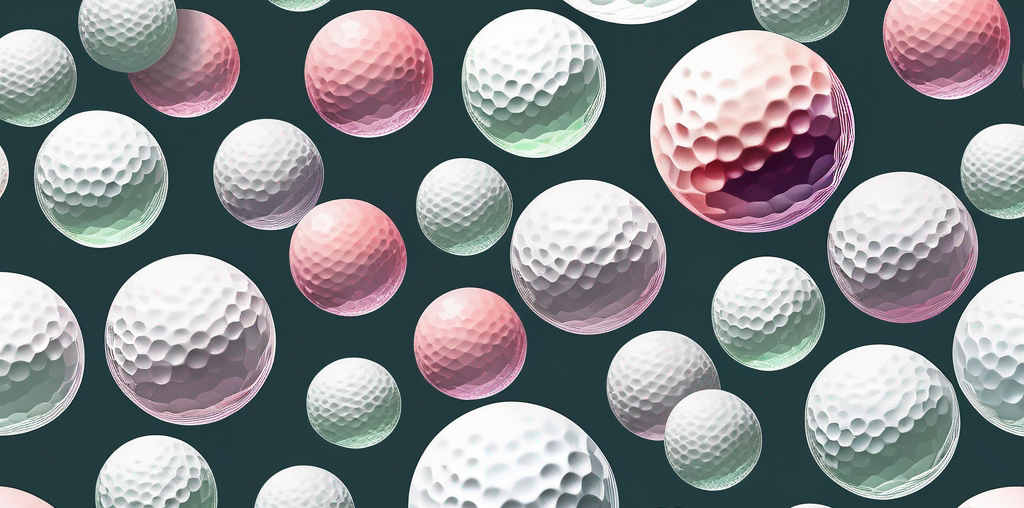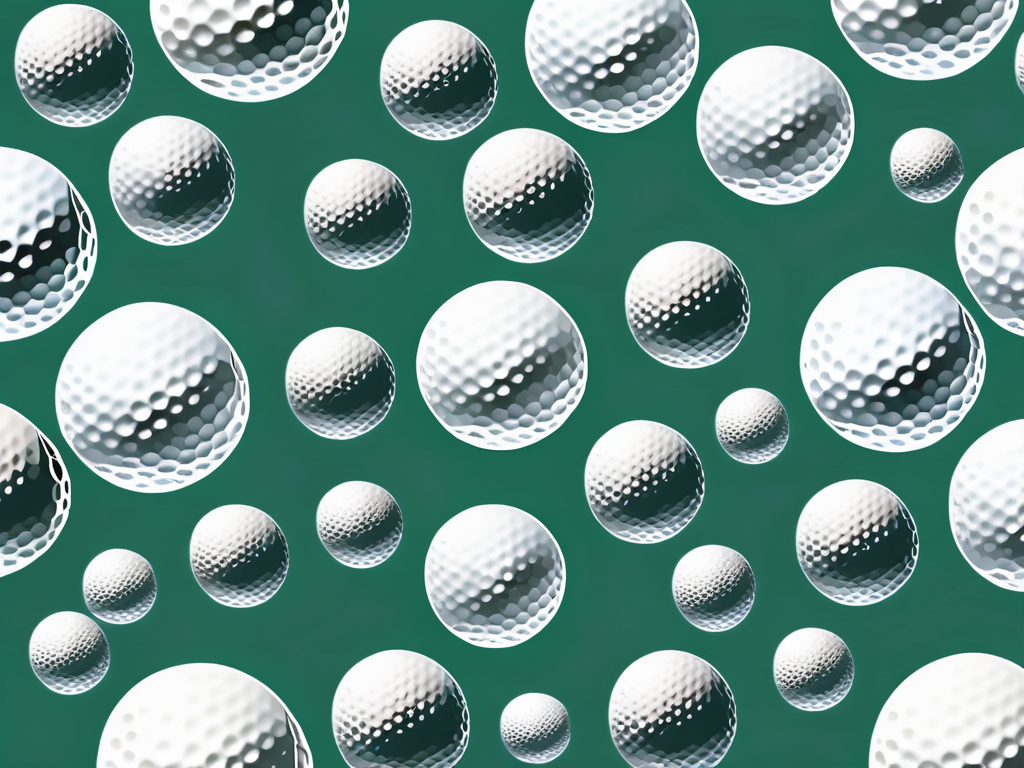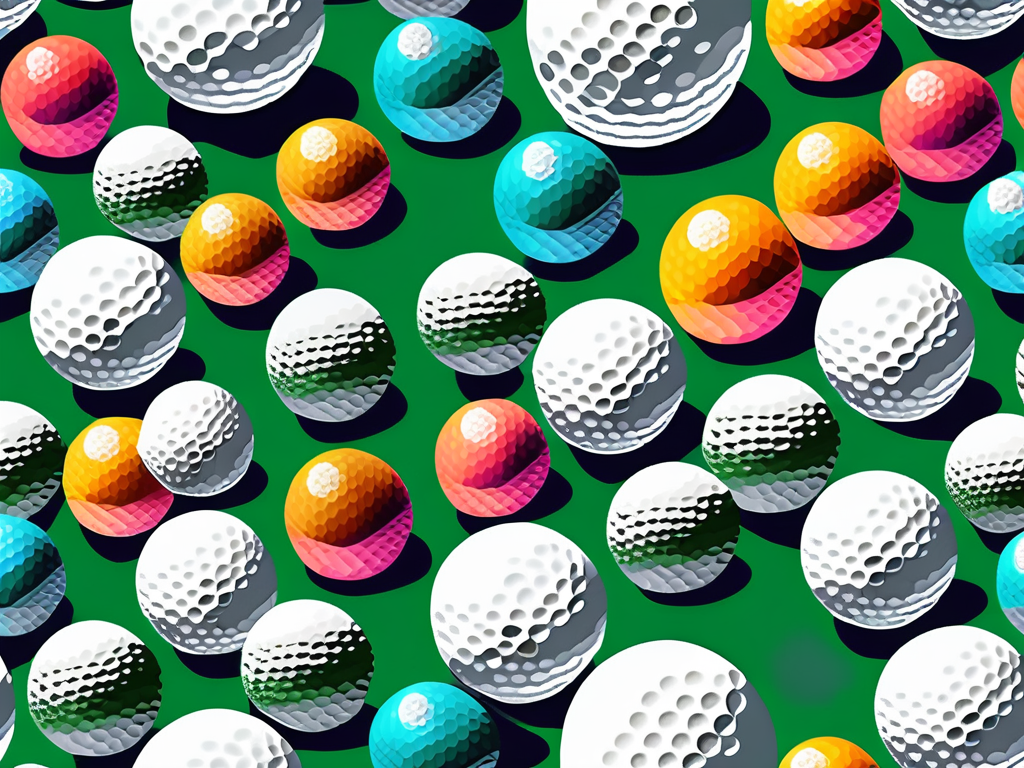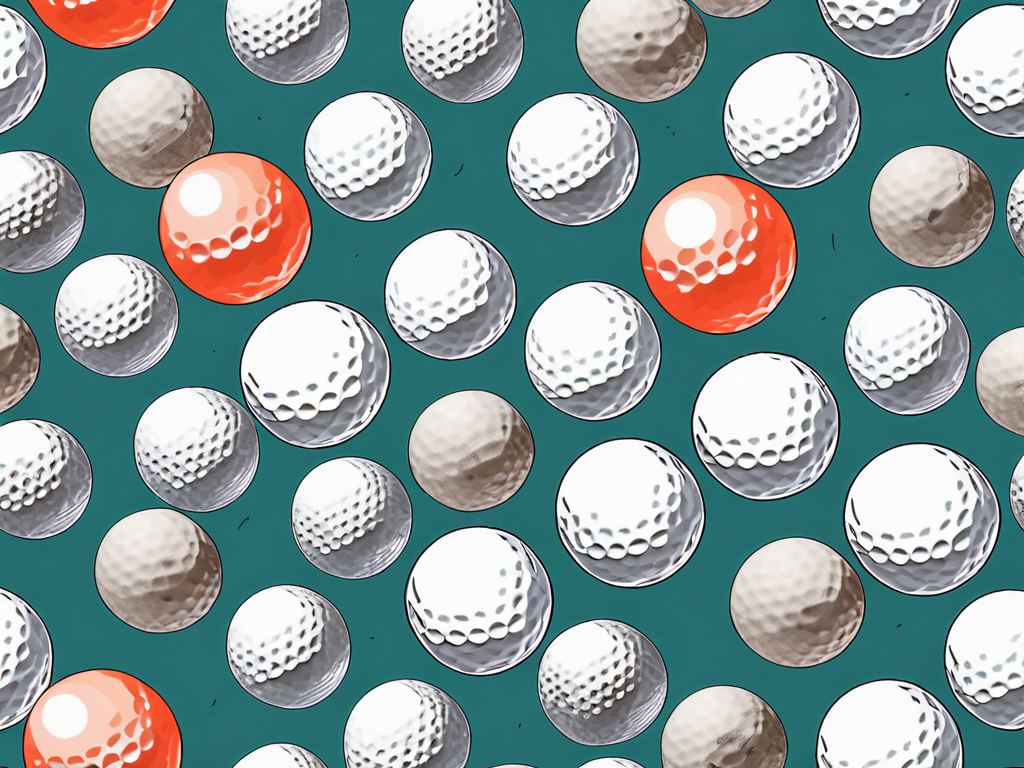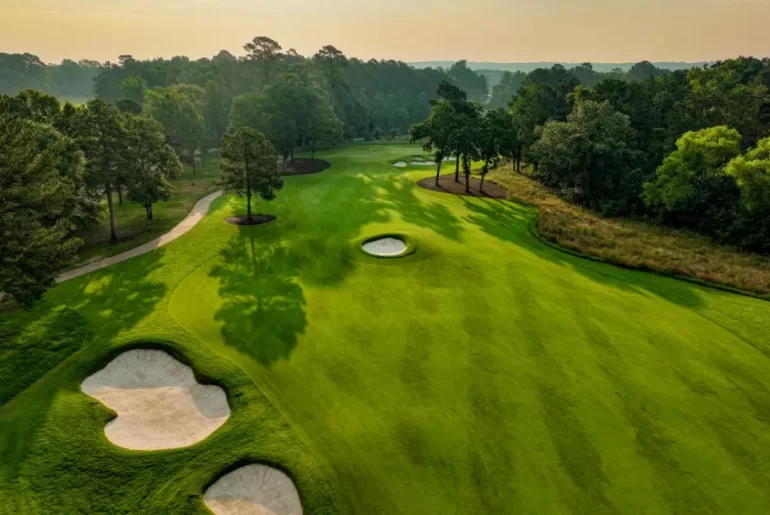|
Getting your Trinity Audio player ready...
|
Choosing the right golf ball is essential for optimizing your game. With so many options available, it can be overwhelming to decide which golf ball is best suited for your needs.
In this comprehensive guide, we will walk you through the different types of golf balls, factors to consider when choosing, and the construction and materials used in golf ball manufacturing.
Additionally, we will explore some popular golf ball brands and their unique features.
Understanding Golf Ball Types
When it comes to golf ball types, there are various categories to consider. Understanding the differences between these types will help you make an informed decision.
Golf balls are not just simple spheres that get hit around the course. They are carefully engineered pieces of equipment that can greatly impact your game.
Let’s dive deeper into the different types of golf balls to gain a better understanding.
Two-Piece Golf Balls
Two-piece golf balls are a popular choice among golfers, especially beginners. These balls feature a solid rubber core, which provides maximum distance and durability.
The outer cover of a two-piece golf ball is typically made of a hard plastic material, offering excellent durability and resistance to scuffs.
These balls are known for their straight flight and are suitable for golfers who seek distance and forgiveness.
Imagine teeing off with a two-piece golf ball. As you swing, the solid rubber core compresses and then rebounds, transferring energy to the ball.
This energy transfer results in a powerful shot that can help you reach those long fairways with ease.
The hard plastic cover acts as a shield, protecting the ball from scratches and scuffs, ensuring its longevity.
Three-Piece Golf Balls
Three-piece golf balls are designed for golfers who prioritize control and spin. They consist of a liquid or solid rubber core, surrounded by an inner mantle layer.
The outer cover is made from a softer material, such as urethane, which enhances spin and feels.
Three-piece golf balls offer more control around the green and are preferred by intermediate to advanced players.
Picture yourself on the green, trying to execute a delicate chip shot. With a three-piece golf ball, the soft outer cover grips the clubface, allowing you to impart more spin on the ball.
This increased spin helps the ball stop quickly on the green, giving you better control over your shots.
The inner mantle layer also contributes to the ball’s performance by providing a responsive feel, allowing you to gauge the shot more accurately.
High-Performance Golf Balls
High-performance golf balls are engineered to deliver exceptional performance in terms of distance, spin, and feel.
These balls are designed for professional golfers or those with a low handicap. High-performance golf balls often feature multiple layers, combining the benefits of both two-piece and three-piece designs.
They are typically made with advanced materials and offer superior control and precision.
Imagine playing alongside professional golfers and wanting to match their level of performance. High-performance golf balls can help you achieve that.
With their advanced construction and materials, these balls offer the perfect balance of distance, control, and feel.
The multiple layers work harmoniously to optimize each aspect of your game, giving you the confidence to take on any challenge the course presents.
Factors to Consider When Choosing a Golf Ball
When selecting a golf ball, considering certain factors can help you find the right match for your playing style and preferences.
Whether you’re a casual weekend golfer or a seasoned pro, choosing the perfect golf ball can make a significant difference in your game.
One important factor to consider is the construction of the golf ball. Different layers in a golf ball can impact its performance on the course.
For example, a four-piece ball is designed for high spin and control, making it ideal for skilled players looking to shape their shots.
On the other hand, a two-piece ball is known for its durability and distance, making it a popular choice for beginners and recreational golfers.
Your Skill Level
Your skill level plays a significant role in determining the appropriate golf ball. If you’re a beginner, a two-piece ball may be the best choice, as it provides distance and forgiveness.
Intermediate players may benefit from a three-piece ball, which offers a balance between distance and control.
Advanced players should opt for high-performance balls tailored to their specific needs.
Another factor to keep in mind is the cover material of the golf ball. Golf balls can have either a surlyn or urethane cover, each offering different characteristics.
Surlyn covers are more durable and provide a firmer feel, while urethane covers offer more spin and control on approach shots and around the greens.
Your Swing Speed
Understanding your swing speed can help you select a golf ball that maximizes your distance and control.
Golf balls are often categorized based on swing speeds low compression for slower swings and high compression for faster swings.
For those with slower swings, a low compression ball offers more distance, while high compression balls suit faster swing speeds.
It’s also essential to consider the dimple pattern on the golf ball. Dimples help reduce drag and optimize lift, allowing the ball to travel farther.
Different dimple patterns can affect the ball’s trajectory and stability in the air, so choosing the right dimple design can enhance your overall performance on the course.
Your Budget
Your budget is another important consideration when choosing a golf ball. Prices can vary significantly, depending on the brand and performance level.
If you’re on a tight budget, there are plenty of affordable options available that still deliver satisfactory results.
However, if you’re willing to invest in top-of-the-line golf balls, you can expect superior feel and performance.
Golf Ball Construction and Materials
The construction and materials used in golf ball manufacturing impact their performance on the course. Let’s explore some key aspects.
When it comes to golf ball construction, manufacturers often focus on optimizing the design to cater to different player preferences and skill levels.
Understanding the intricate details of core materials, cover materials, and dimple patterns can provide valuable insights into how a golf ball behaves during play.
Core Materials
The core of a golf ball is responsible for providing the initial velocity and energy transfer. Cores can be made of solid rubber or consist of multiple layers.
The composition of the core affects factors such as distance, feel, and spin. Softer cores offer greater feel and control, while firmer cores provide more distance.
Furthermore, advancements in core technology have led to the development of complex core designs that aim to maximize energy transfer from the clubface to the ball.
By fine-tuning the core materials and structure, manufacturers can tailor the performance of the golf ball to suit different swing speeds and playing styles.
Cover Materials
The cover of a golf ball is the outermost layer that directly contacts the clubface. Common cover materials include surlyn and urethane.
Surlyn covers offer durability and distance, making them suitable for beginners. On the other hand, urethane covers provide superior spin, control, and feel, making them the preferred choice for advanced players.
Manufacturers often conduct extensive research to find the ideal balance between cover thickness, material composition, and aerodynamic properties.
This delicate balance can significantly impact the ball’s performance on approach shots, pitches, and chips around the green.
Dimple Patterns
Dimples play a crucial role in aerodynamics and ball flight. Various dimple patterns are used by manufacturers to optimize lift and reduce drag.
Dimples create turbulence that helps the ball maintain stability and achieve more distance. The pattern and arrangement of dimples can differ between models and can influence ball performance.
Moreover, the evolution of dimple design has led to innovative aerodynamic concepts that aim to enhance accuracy and consistency in ball flight.
By strategically positioning dimples and varying their depths, manufacturers can fine-tune the ball’s trajectory and overall performance in different weather conditions.
Golf Ball Brands and Their Unique Features
Several golf ball brands offer a wide range of options to suit different golfers. Understanding the unique features of each brand can help you make an informed decision.
Titleist Golf Balls
Titleist is a renowned brand that offers a variety of golf balls suitable for all skill levels.
Their Pro V1 and Pro V1x models are highly regarded among professionals and advanced players. These balls provide exceptional control, spin, and feel around the greens, making them a popular choice on tour.
Callaway Golf Balls
Callaway’s golf ball lineup caters to players of all abilities. The Chrome Soft and Chrome Soft X are popular options known for their soft feel and impressive distance.
These balls feature a dual-core construction and a urethane cover, delivering excellent control and spin.
TaylorMade Golf Balls
TaylorMade offers golf balls that cater to various swing speeds and player preferences. The TP5 and TP5x models are designed to deliver distance, accuracy, and feel.
With their multi-layer construction and urethane cover, these balls offer exceptional performance throughout the bag.
Choosing the right golf ball can greatly impact your game, so it’s essential to consider your skill level, swing speed, and budget.
By understanding the different types of golf balls, their construction and materials, and the unique features offered by various brands, you’ll be able to make an informed decision and enhance your overall golfing experience.


